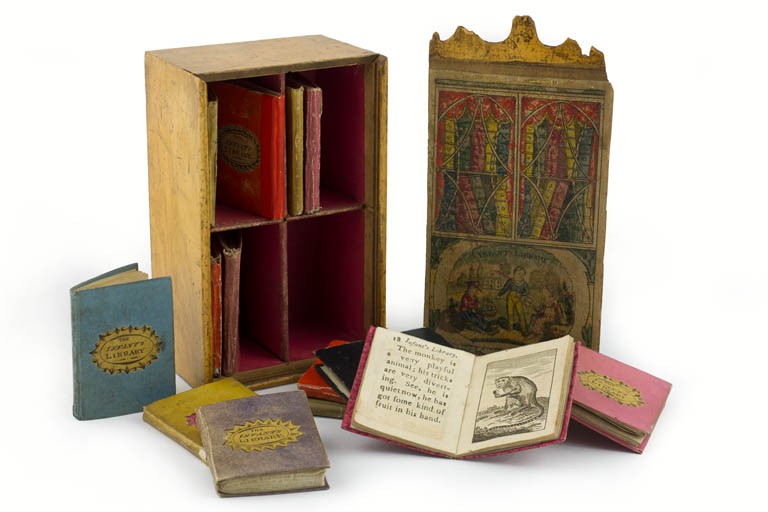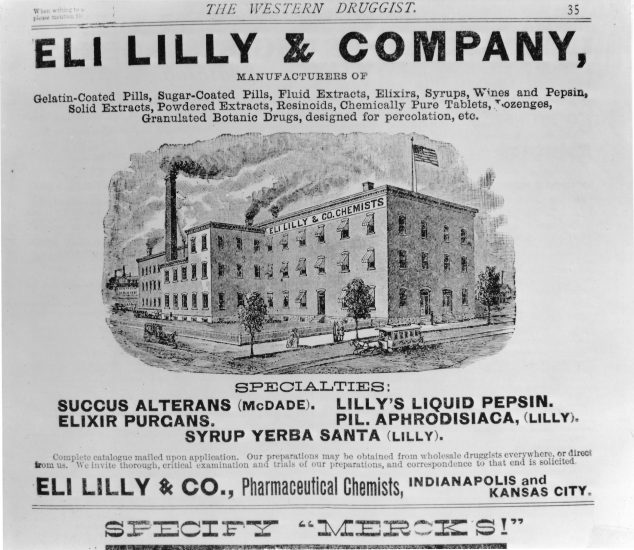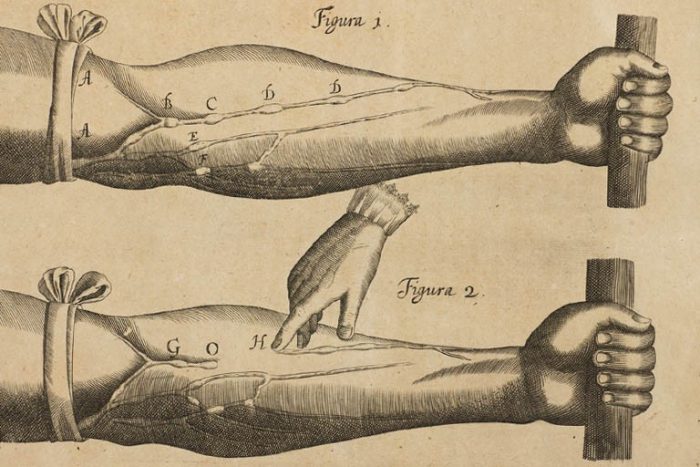Written By: Adina Vega
Edited By: Marlinda Gallardo

A rare collection of miniature children’s books from the Elizabeth Ball collection. Most of the Lilly Library’s children’s books come from the Elisabeth Ball collection, which came to the Library in 1983.
Art of Play, an online retail store specializing in unique toys and books, defines a miniature book as being a larger-than-life tale that fits in the palm of your hand. There is a long history of collecting miniature books among bibliophiles and book collectors. Indiana University is home to one of the world’s most special miniature library collections, including rare books, manuscripts, and special collections. Located in the heart of Bloomington, Indiana, the Lilly Library includes 16,000 miniature books, puzzles, and other delightfully eclectic findings.

Early Eli Lilly and Company advertisement featuring some of its first products
The Lilly Library was founded by Eli Lilly and Company, an American pharmaceutical company headquartered in Indianapolis. The company was established in 1876 by and named after Colonel Eli Lilly, a pharmaceutical chemist and veteran of the American Civil War. Most of the works from the collection were gifts from Josiah Kirby Lilly Jr., a third-generation heir, and Eli Lilly & Co. leaders. The mass collection includes various pieces on American history and literature, bibles and religions, children’s literature, Indiana history, and documents on medicine and science.

A visual excerpt from English physician William Harvey’s 1628 book De Motu Cordis. Harvey was the first person to describe blood circulation accurately.
Stemming from an interest in the medical field, the Lilly Library boasts a collection of anatomical images and medical books. This century saw the rise of many medical innovations like microscopic anatomy, refined injection techniques, and anatomical experiments. Anatomia Animata, a phrase from the 17th century referring to vivisection, is a collection of images of anatomical and medical books on display in this exhibition. These texts, alongside the Lilly’s more extensive collection of medical texts, help define the Lilly Library as one of the country’s most important libraries in the history of medicine.
Admission to the library is always free and open to everyone, not just Indiana University students. Click here to plan your visit!



0 Comments